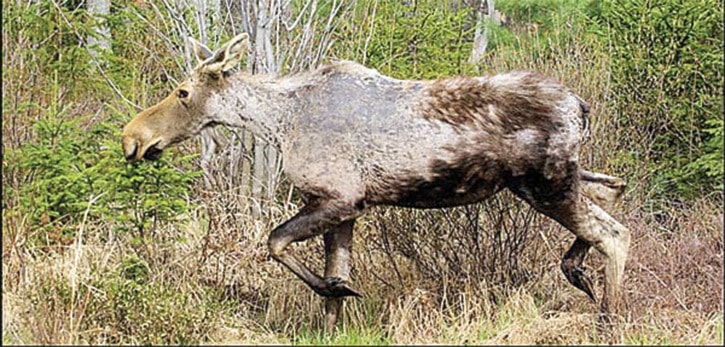In the story ‘Survey to monitor moose tick issue’ published in the Lakes District News’ March 4, 2015 issue, members of the public were being asked to help document moose winter tick infestations by completing a survey.
The provincial moose winter tick surveillance program was a pilot study to develop a standard method for recording tick distribution across the province.
The survey monitored the number of animals with hair loss and the extent of hair loss to estimate winter tick prevalence and distribution.
The province received 361 reports between Jan. 10 and April 30, 2015, and most of reports were from the Skeena, Omineca and Peace regions.
Infestations appeared to be most severe in the Omineca region, where 63 per cent of moose observed exhibited some degree of hair loss. In the Skeena region, 49 per cent of moose observed had some degree of hair loss.
Greig Bethel, Spokesperson for the Ministry of Forests, Lands and Natural Resource Operations explained that these numbers are consistent with historic data. He said the survey results will now help inform moose management in B.C.
Winter tick infestations are generally observed on moose during the months of February through April. Tick infestations can result in behavioural and physiological changes and directly impact the survival rates of moose.
Winter ticks can be a significant parasite for moose populations and can contribute to moose declines in parts of their range. This type of tick spends the winter on one moose and there can be as many as tens of thousands on one animal at a time. As the ticks mature, they feed on the animal’s blood. In late winter, the irritation results in moose scratching and grooming themselves excessively, resulting in hair loss and less foraging. The extent of hair loss on a moose is a rough indicator of how many ticks are present and can be observed easily from a distance.
